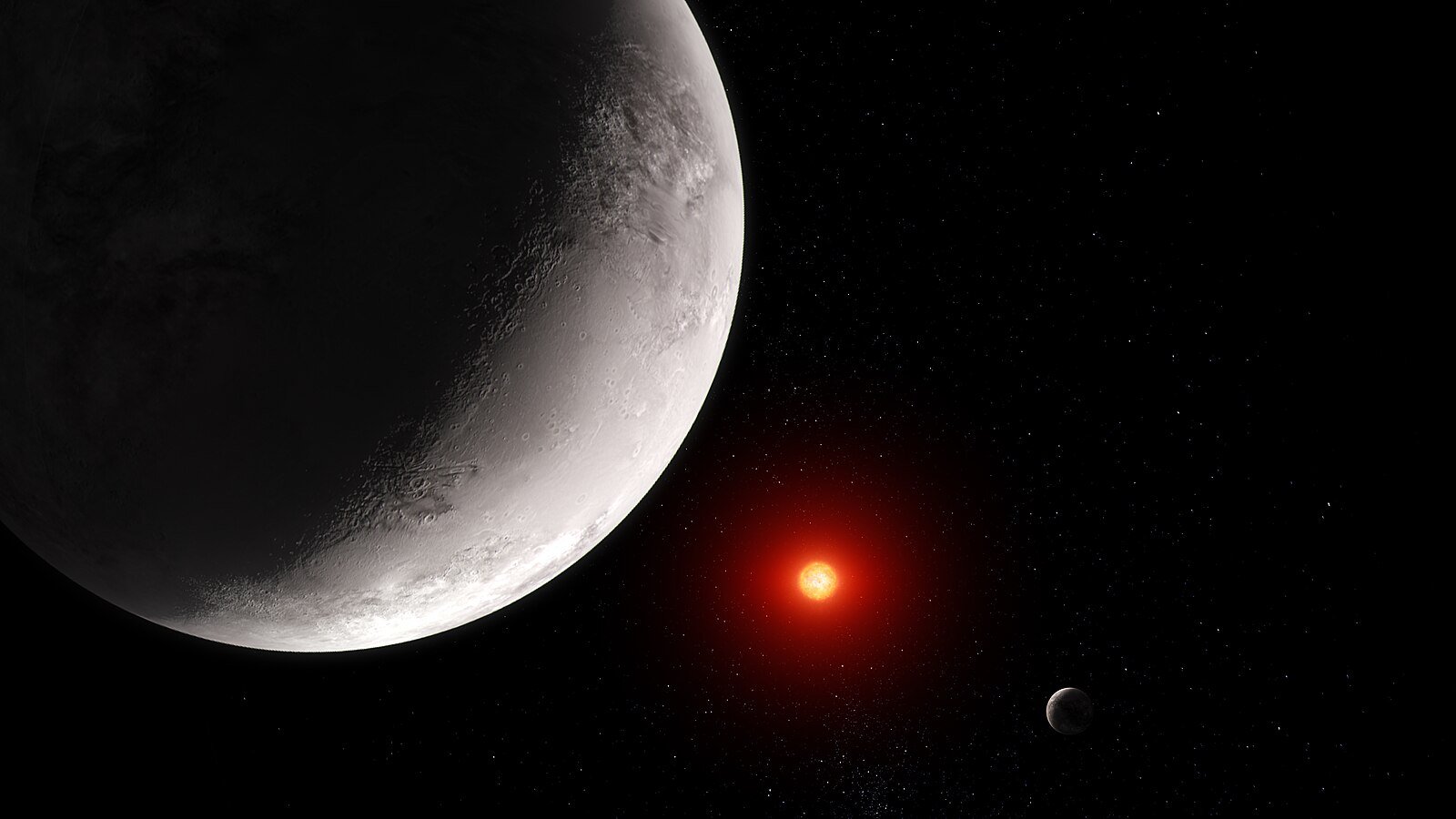New readings from the exoplanet Trappist-1b captured by the James Webb Space Telescope (JWST) have revealed the presence of ghost signals from its host star, as well as other critical data atmospheric data about the planet itself.
Part of the seven-planet Trappist 1 star system, three of which are in the star’s habitable zone, Trappist-1b is the first of the star’s rocky, earth-like planets to be studied in greater detail by the JWST. The researchers behind the first-of-its-kind study believe their findings will help characterize the planetary system, including how the host star affects the weather, composition, and perhaps habitability of all seven of its planets.
Trappist 1 Star System A Primary Target for Life Beyond Earth
Since it was first discovered in 2016, the Trappist-1 star system has fascinated astronomers and astrobiologists alike. The primary attraction is the presence of seven rocky worlds orbiting the red dwarf star. Further observations revealed that three of these earth-like planets, Trappist-1e, f, and g, lie within the star’s habitable zone, where the necessary conditions exist for the presence of water on the planets’ surface. This was a major finding, as all life forms on Earth require water’s presence to exist.
More recently, a series of studies have begun to look even closer at this exoplanetary system, including using the JWST’s unique set of instruments to try to unlock the atmospheres of Trappist-1’s planets. Now, the first results of that work are starting to come in, including an analysis of the atmosphere of Trappist-1b that revealed something called ghost signals that will likely affect upcoming efforts to search Trappist-1e, f, and g for signs of extraterrestrial life.
Dynamics of the Host Star Likely to Affect the Habitability Analysis of Trappist 1 Exoplanets
Operating as part of the General Observers (GO) program, the latest readings from the JWST were captured during the space telescope’s first year of observations. This first round of measurements was captured during two separate transits of Trappist-1b, a period where the planet passes between its host star and Earth, allowing the instrument to capture light spectra data about its atmosphere.
“These are the very first spectroscopic observations of any TRAPPIST-1 planet obtained by the JWST, and we’ve been waiting for them for years,” said Olivia Lim, a doctoral student and the GO program’s principal investigator.
Using its Near Infrared Imager and Slitless Spectrograph (NIRISS) instrument, the JWST captured all kinds of intriguing data about Trappist-1b, as well as supplementary data about the behavior of its host star. Most intriguing is the presence of what the team called “ghost signals.” Caused by the volatility of the host star, which included dark spots, light spots (called faculae), and solar flares like our own sun, these ghost signals can effectively trick the observer by giving a false reading about the presence of chemical compounds in the atmosphere that may (or may not) actually be there.
“In addition to the contamination from stellar spots and faculae, we saw a stellar flare, an unpredictable event during which the star looks brighter for several minutes or hours,” said Lim. “This flare affected our measurement of the amount of light blocked by the planet.”
Anticipating Ghost Signals Can Improve Upcoming Efforts to Find Signs of Life in the Trappist 1 System
Published in the Astrophysical Journal Letters, the new study was also able to further characterize the atmosphere of Trappist 1b. This includes the elimination of a perfectly “clear, extended atmosphere” around the entire planet while also opening up the possibility that the exoplanet has an atmosphere made up of methane, carbon dioxide, or even pure water. The atmosphere could also be similar to that of Saturn’s moon Titan, the only moon in our solar system with its own atmosphere.
Of course, potentially the most exciting aspect of this new research may be how it will affect the search for life in the Trappist-1 system, including a series of upcoming efforts to peer deeper into the atmospheres of Trappist-1e, f, and g to look for the telltale chemical signs of biology. Towards that end, the researchers behind this latest study say that their findings should help those efforts account for the volatility of the host star in their readings, especially when trying to avoid false data from ghost signals, giving them the best chance to succeed in the search for life in the cosmos.
“Such signatures of stellar activity are difficult to model, but we need to account for them to ensure that we interpret the data correctly,” said Lim.
Christopher Plain is a Science Fiction and Fantasy novelist and Head Science Writer at The Debrief. Follow and connect with him on X, learn about his books at plainfiction.com, or email him directly at christopher@thedebrief.org.

